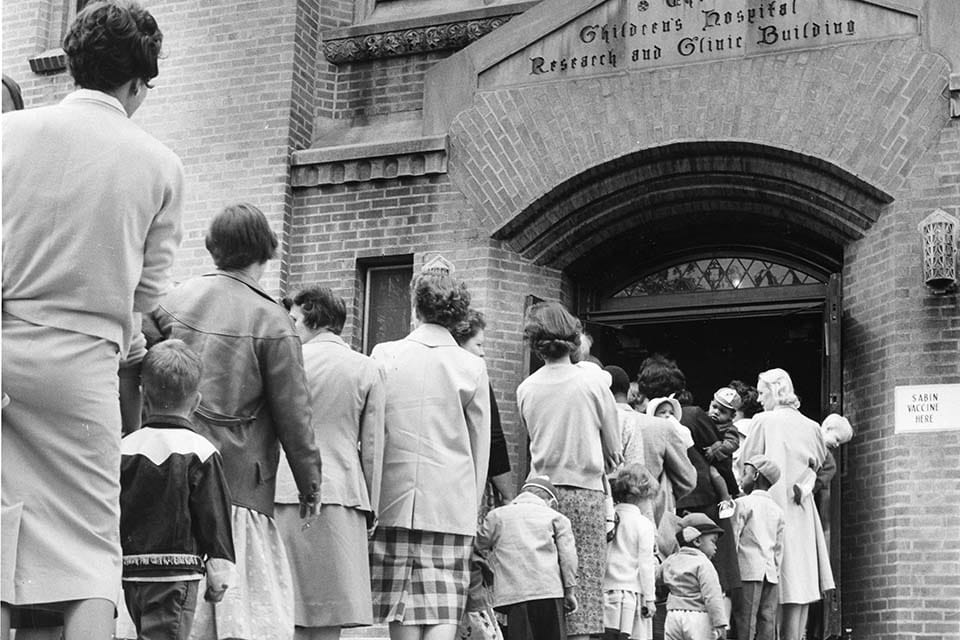
On April 24, 1960 — a day known as “Sabin Sunday,” — 186,000 residents of Cincinnati and Hamilton County received Dr. Albert Sabin’s oral polio vaccine on a cube of sugar.
1960
Cure
Cincinnati Children’s researcher Albert Sabin, MD, develops the oral polio vaccine. Worldwide adoption of the vaccine nearly eliminates the crippling disease. Today it is estimated that 17 million people are walking that otherwise would have been paralyzed.








